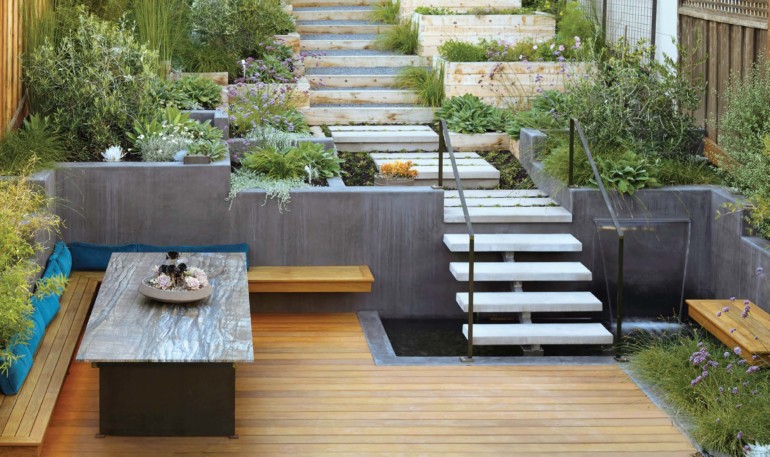Hills got you down… or up? Gardening is always challenging, but one of the most difficult of all garden design problems is landscaping on a slope. And in mountainous Marin, many homeowners are not blessed with a flat yard. Here are some top tips for those inclined to tame their tilt.
FIRST STEPS Start by evaluating your hill’s pitch. If it’s more than 30 degrees, consider terracing the area to mitigate topsoil erosion. An unplanted or unstabilized hill can be hazardous during the rainy season.
RETAIN THIS Consider building retaining walls to create terraces. Most municipalities require a permit and a design from a structural engineer if your wall is a certain height.
TERRACE FIRMA To preserve slopes, construct a series of shorter terraces rather than large ones. When hills are cut, the land’s integrity is compromised because nutrient-deficient and ill-draining subsoil is exposed.
RISE ABOVE IT Build a deck over a steep downward slope to provide a more usable level space.
SIGHT LINES Some home values are based on the view, so define your important areas with your neighbors before starting your project and research ultimate tree and shrub heights before planting.
THE JUTE OF IT Install jute erosion control netting before planting on very steep slopes. Secure it with U-shaped galvanized pins. To plant in it, cut small X shapes in the jute and plant your greenery through it.
BETTER WITH BERMS To retain extra rainwater and irrigation, create small planting wells with small berms on the downhill side of plants, using soil left over from your planting holes.
THINK DEEP Plant woody, deeprooted trees, shrubs, spreading ground covers, perennials and ornamental grasses to provide underground stability and a dense network of fine roots. Focus on plants that are drought tolerant too.
BE A DRIP The goal is to give water time to penetrate roots instead of wastefully running off — install drip irrigation with a timer at a slow application rate. Place the emitters on the uphill side of plants.
HILL DWELLERS Try these hillside plants: artemisia, ceanothus, creeping bramble, rock rose, rugosa rose, creeping rosemary, correa, breath of heaven and Russian sage.


